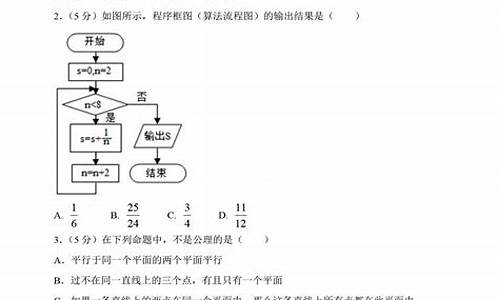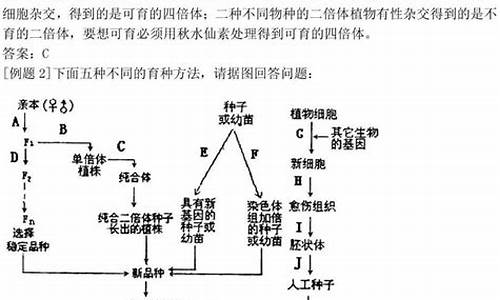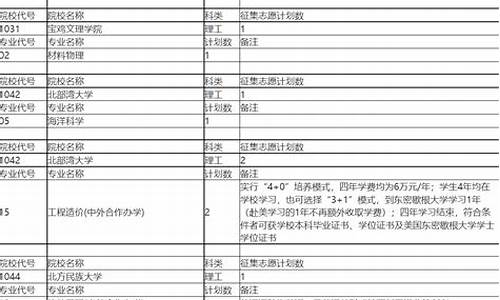您现在的位置是: 首页 > 招生信息 招生信息
英语高考常考考点,英语高考常考考点汇总
tamoadmin 2024-05-18 人已围观
简介本文是 考 网写作翻译频道 为您准备的《高考英语重要知识点:写作重点句型》请大家参考! (1)、疑问词+ever whatever, whoever, whichever, whenever, wherever, however用来引导让步状语从句,相当于no matter和what, who, which, when, where, how连用。 [例句] Whatever (=No

本文是 考 网写作翻译频道 为您准备的《高考英语重要知识点:写作重点句型》请大家参考!
(1)、疑问词+ever whatever, whoever, whichever, whenever,
wherever, however用来引导让步状语从句,相当于no matter和what, who, which, when, where, how连用。
[例句]
Whatever (=No matter what) may happen, we shall not lose hope.
无论发生什么事,我们都不能失去希望。
Whatever reasons you (may) have, you should carry out a promise. 无论你有什么理由,你都应该遵守诺言。
Whoever (=No matter who) comes, he will be warmly welcome. 无论谁来,都会受到热烈欢迎。
Whenever (=No matter when) it happened, it was certainly not yesterday.
此事无论发生在何时,但绝不是昨天。
Whenever you (may) call, you will find her sitting by the window. 无论什么时候你去找她,你都会看到她坐在窗边。
Wherever (=No matter where) he went, he made friends with people.
Whichever (=No matter which) of them you many choose, the quality will be the same.
他们当中不论你选哪一个,品质都一样。
However (=No matter how) hard I have tried, I can't find the answer.
(2)、whatever, whoever, whichever, whomever等引导名词性从句,这时不能用no matter+疑问词替换。
[例句]
Take whichever you want. 你要哪个就拿哪个。
We will do whatever we can to help him out. 我们要尽力帮助他摆脱困境。
I'll show you whatever you want to see. 你想看什么我就给你看什么。
Whoever did this job must be rewarded. 无论谁做这件事都要得到报酬。
Whoever walks around in such a heavy rain will catch a cold. 任何人在这种大雨中行走都会患感冒。
You may invite whomever(口语中常用whoever代替)you like to the party. 你可以邀请你喜欢的人来参加晚会。
Take whatever magazines you want to read. 你可以取阅任何你想读的杂志。
倒装结构
句型22
全倒装句型(一)
here, there, out, in, up, down, now, then, away等副词放在句首,句子需要全部倒装
[例句]
There goes the bell! = The bell is ringing. 铃响了!
Here comes the bus. =The bus is coming. 汽车来了。
Now comes your turn to make a short speech. 该轮到你发言了。
Away went the thief when he saw the police.
Then came the hour we had been looking forward to. 我们期盼的时候到了。
[注意]
(1)在这种情况下倒装仅限于不及物动词或be动词,像go, come, rush, live, stand, lie等。
(2)主语是人称代词时不要倒装。如:Away he went. 他走远了。
句型23
全倒装句型(二)
表示方位的状语放在句首,句子全倒装;谓语动词多为be, lie, stand, sit, come, walk, run, stop etc. 不及物动词。
[例句]
On a hill in front of them stands a great castle. 在他们面前的山上矗立着一座巨大的城堡。
In front of the house stopped a police car. 房子的全面停着一辆警车。
Around the corner walks a young policeman. 拐角处有个年轻的警察在行走。
Under the tree sat a boy of about ten. 在树下坐着一个大约10岁的男孩。
句型24
全倒装句型(三)
(表语)adj. / v-ing / v-ed +(地点状语)+ be(或其他动词形式)…
So adj./adv…that…如此……以至于……(so引导的句子倒装,而that引导的句子不倒装!) (这种结构是半倒装句。)
[例句]
Present at the meeting were the manager, all the designers and the writer. 出席会议的有经理,设计师和词作者。
Fastened to the pole is the National flag. 旗杆上有一面国旗。
Hidden behind the door were some naughty children. 有几个顽皮的孩子藏在门后面。
Sitting at the back of the classroom were several old teachers, listening attentively to the new teacher. 坐在教室后面的是几位老教师,他们在认真地听新教师的课。
Gone are the days when farmers lived in the poor houses.
农民住在破旧房子里的日子过去了。
Typical for China is the crosstalk show, where a pair of comedians entertains the audience with word play. 相声是中国典型的喜剧,两个演员通过玩弄词藻来逗乐观众。
So clearly does he speak English that he can always make himself understood.
他说英语非常清晰,别人都能听懂他的话。
So fast does light travel that we can hardly imagine its speed. 光运行非常快,我们几乎无法想象它的速度。
高考正在紧张的备考阶段,高考英语的学习依然至关重要,不仅靠知识的积累和运用。接下来是我为大家整理的高考英语知识点考点 总结 归纳,希望大家喜欢!
高考英语知识点考点总结归纳一
高中英语实用常考 短语
首先,尤其重要的,最重要的 above all
偶然,无意中 by accident
对(于)…很积极 be active in
合计为 add up to
承让错误 admit one’s mistake
接受某人的建议 take / follow one’s advice
就…提出建议 give advice on
建议某人做某事 advice sb. to do sth.
后天 the day after tomorrow
毕竟;终究 after all
违心 against one’s will
在…岁时 at the age of
实现目标 achieve one’s aim
在空中;悬而未决 in the air
在户外,在露天里 in the open air
在机场 at the airport
火警 the fire alarm
满腔怒火 be filled with anger
因某人之言行而生气 be angry at sth.
生某人的气 be angry with sb.
通知 make an announcement
相继地,按顺序地 one after another
相互,彼此(三者或三者以上之间)one another
相互(指两者之间) each other
没有回答 give no answer
2.考试必备重点单词短语
形成…局面;产生 come into being
安全带 a safety belt
三思而后行。 Second thoughts are best.
尽力,尽最大的努力 do / try one’s best
尽量利用,善用 make the best of
一切顺利,万事如意 all the best
黑体地,粗体地 in bold
出身于农民家庭 be born in a peasant’s family
鞠躬 make a bow
动动脑子 use one’s brains
打破纪录 break the record
深吸一口气 take a deep breath
屏息;憋住气 hold one’s breath
上气不接下气 out of breath
刷牙 brush one’s teeth
突然哭起来 burst into tears
突然一阵大笑 a burst of laughter
要不是 but for
呼救声 a call for help
保持镇静(别慌) keep calm
保持安静(别吵) keep quiet
保持不动(别动) keep still
保持沉默(别说话) keep silent
夏令营 a summer camp
去 野营 go camping
情不自禁… cannot help doing
打牌 play cards
照顾,保管 take care of
医疗护理 medical care
anything but 一点也不
anything like 像……那样的东西
anywhere near 接近于
apart form 除……之外尚有
apply to 向……申请,适用于
appreciation of 对……的欣赏
argue against 反对
as a result of 作为……的结果,由于
高考英语知识点考点总结归纳二
感叹句
感叹句:一般是用来表示说话时的喜悦、惊讶等情感。英语感叹句常用"what"和"how"引导,"what"和"how"与所修饰的词置于句首, 其它 部分用陈述句语序。
感叹词 修饰对象 感叹部分 主语 谓语+其他!
How(副词) 修饰形容词 How nice
How nice a girl the girl
she is!
is!
修饰副词 How well
How hard the boy
the workers Is swimming!
are working!
修饰动词 How
=what the flowers
How
=how fast She
she
he
he Loves the flowers!
loves!
runs!
runs!
What(形容词) 修饰单数可数名词 What a nice girl
=How nice a girl Jenny
Jenny Was!
was!
修饰复数可数名词 What nice girls They Were!
修饰不可数名词 What fine weather
what dirty water It
he Is!
drank!
感叹句的特殊形式
感叹句还可由陈述句、疑问句、祈使句,甚至一个词组及单词构成。例如: There was no face showing!
He’s such a nice boy!
The Great Wall is a magnificent building!
Isn’t it snowing heavily!
Wonderful!
Nonsense!
Happy New Year to you!
Cheer!
高考英语知识点考点总结归纳三
强调句
1.强调句型用于强调陈述句;
2.强调句型用于强调一般疑问句;
3.强调句型用于强调特殊疑问句;
4.强调句型用于强调not…until…句型;
5.强调句型与状语从句、定语从句、祈使句的混合考查。
替代
1.do/does/did替代动词;
2.so和not分别代替肯定和否定的从句.
省略
1.主语的省略;
2.谓语或谓语的一部分的省略;
3.宾语的省略;
4.不定式的省略;
5.宾语从句和状语从句中的省略;
6.虚拟条件句中if的省略。
倒装句
1.部分倒装;
2.完全倒装
3.常考的几个重要句型:
So +be/情态/助动词+主语
Neither+be/情态/助动词+主语
So +adj/adv …+that …
Neither …, nor …
Not only …, but also …
Not until …
高考英语知识点考点总结归纳四
祈使句
一. 祈使句的句式特征
祈使句常常是表达说话人对对方的劝告、叮嘱、请求或命令等。因此,祈使句中一般没有主语,但根据其句意,实际上是省略了主语you。祈使句句末用感叹号或句号,朗读时,常用降调。在表达请求或劝告时,在祈使句前或句末可加, 上please,以使句, 子的语气更加缓和, 或客气。祈使句一般没有时态的变化,也不能与情态动词连用。例如:
Keep off the grass!勿踩草地!
Put the boxes in the small room.把那些盒子放到那个小房间里。
二. 祈使句的肯定句式
祈使句的肯定句式一般分为以下三种类型:
1. 行为动词原形+其他成分。例如:
Make sentences after the model.根据例句 造句 。
2. Be动词+其他成分(形容词、名词或介词短语等)。例如:
Be careful when crossing the street.过马路时要小心。
3. Let, +宾语+动词原, 形+, 其他, 成分, 。例如:
Let him go back now.让他现在回去吧。
三. 祈使句的否定句式
祈使句的否定句式,通常情况下在句首加上Don’t或Never,一般分为以下四种类型:
1. 在祈使句的肯定句式前加Don’t,构成“Don’t+行为动词原形+其他成分”。例如:
Don’t say that again!别再那样说了!
2. 在Be动词引起的肯定祈使句前加Don’t,构成“Don’t be+其他成分(形容词、名词或介词短语等)”。例如:Don’t be careless.不要粗心。
注意:在这种句型中be不能省略;否定副词not不可置于be之后。
3. Let引起的祈使句的否定形式有两种:(1)Let开头的祈使句,如果后面跟第一、第三人称名词或代词的宾格,可在Let前加Don’t,也可在Let后宾格的名词或代词后面加not。(2)如果以Let’s开头的祈使句,必须在Let’s后加not。例如:
Don’t let me go with her tomorrow. =Let me not go with her tomorrow.
不要让我明天跟她一起去。
Let’s not tell her the truth whenever we meet her.
无论什么时候我们碰到她,都不要告诉她真相。
4. 在公共场合的 提示语 中,否定祈使句常用“No+名词/V-ing形式”结构,表示“禁止做某事”。例如:
NO PHOTOS! 禁止拍照!
四. 祈使句的反意问句
祈使句的反意疑问句须按其 句子 结构及讲话人的语气来决定其疑问部分。通常有以下三种形式:
1. 祈使句为肯定句式,其反意疑问句表示请求时,通常用will you;表示邀请、劝说时,用won’t you。例如:
Be sure to write to us, will you?你一定要给我们写信,好吗?
Come to have dinner with us this evening, won’t you?
今晚来和我们一起吃饭,好吗?
2. 祈使句为否定句式,其反意疑问句通常只用will you。例如:
Don’t smoke in the meeting room, will you?
不要在会议室抽烟,好吗?
3. Let开头的祈使句构成反意疑问句时,除Let’s用shall we外,其他均用will you。例如: Let the boy go first, will you?让个那男孩先走,好吗?
Let’s take a walk after supper, shall we?
晚饭后我们去散步,好吗?
五. 祈使句的回答
祈使句的动作通常是表示将来发生的动作,所以回答祈使句时,一般用will或won’t。在回答具有否定意义的祈使句时,要注意两点:一是“形式一致”,即Yes与will保持一致;No与won’t保持一致。二是“意思相反”,即Yes是“不”的意思;No是“是”的意思。在回答时,要注意分析上下文语境中所提供的条件。例如:
--- Don’t go out, please. It’s raining heavily outside.
请不要出去。外面雨下得很大。
---- Yes, I will. I have to meet my brother at the airport.
不行,我得去机场接我弟弟。
六. 祈使句与陈述句的并列使用
祈使句后接陈述句时,须用连接词连接。如果祈使句与陈述句表示的是一种顺承关系时,要用并列连词and来连接;如果祈使句与陈述句存在一种否定条件关系时,要用并列连词or来连接。例如: Leave it with me and I will see what I can do.
把它留给我吧,我想想有没有办法。
Hurry up, or we’ll be late.
快点,否则我们要迟到了。
七. 祈使句与条件状语从句的连用
祈使句与条件状语从句连用时,条件状语从句可置于祈使句前或后。例如:
Tell him to make a phone call to me if he comes here tomorrow.
如果他明天来这儿的话,叫他给我来个电话。
八. 祈使句的强调形式
祈使句的强调形式通常在肯定祈使句式前加上助动词Do(Do在句中无意义)。例如:
Do shut up!快住口!
九. 特殊形式的祈使句
在英语中,有些祈使句不是以动词原形来引起一个祈使句,而是以一个名词短语来充当,且后接一个带有并列连接词的分句。实际上,这个充当祈使句的名词短语相当于一个条件状语从句。例如:
More water and the young trees couldn’t have died. =If you had given them more water, the young trees couldn’t have died.
如果你给那些小树多浇点水,他们就不会死了。
十. 运用祈使句的误区
祈使句往往容易与不定式、分词或条件状语从句相混淆。在平时的练习或测试中,如果稍不留神,就会出错。因此,要认真审题,认真分析句子结构,并根据上下文语境,作出正确判断。例如:
___________ your composition carefully, some spelling mistakes can be avoided.
A. Having checkedB. Check
C. If you checkD. To check
析:如果空白处选填B(Check)项,则视为祈使句,但后一分句前没有并列连接词and连接;如选A或D项(分词或不定式),句中逻辑主语some spelling mistakes又不能执行这个动作,故均不符合句子结构。因此,只有C项(条件状语从句)符合句子结构及句意。
高考英语知识点考点总结归纳相关 文章 :
1. 高考英语知识点考点归纳
2. 高考英语知识点总结归纳
3. 高考英语知识点归纳整理
4. 英语高考知识点总结归纳
5. 高考英语知识点汇总大全
6. 高考英语知识考点汇总
7. 高考英语考点总结
8. 高考英语知识点归纳
9. 高考英语知识点总结
10. 高中英语知识点总结与归纳









